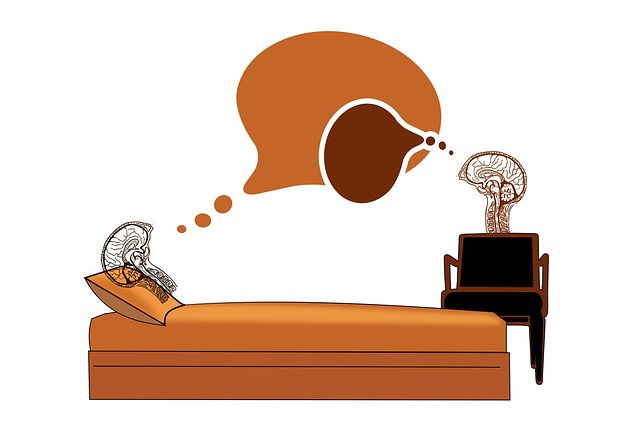Cold therapy, including cryotherapy and the RICE (Rest, Ice, Compression, Elevation) method, is an effective strategy to manage joint swelling and pain from physical activity or sports injuries. Ice therapy reduces inflammation, numbs pain receptors, and provides relief for muscle injuries. The RICE protocol, when followed, minimizes post-workout soreness and speeds up recovery. Cryotherapy and traditional methods like ice baths significantly aid athletes in injury management, enhancing performance, speeding up return to play, and mitigating future injury risks by temporarily reducing inflammation and pain through vessel constriction. The RICE method, with its four key stages, offers immediate pain relief and long-term benefits for faster recovery.
“Unwind and recover effectively with cold therapy—a powerful ally in the fight against joint swelling post-intense physical activity. This article explores ice therapy’s science and numerous benefits, offering a comprehensive guide to athletes seeking swift relief.
From cryotherapy sessions to the time-tested RICE method (Rest, Ice, Compression, Elevation), discover tailored techniques for managing muscle injuries and accelerating injury recovery. Embrace the power of cold compresses and water immersion to revolutionize your post-workout routine.”
Understanding Cold Therapy: An Effective Approach to Joint Swelling Relief
Cold therapy, or cryotherapy, is a well-established approach to alleviating joint swelling and pain resulting from intense physical activity or sports injuries. This method involves applying cold (usually in the form of ice) to the affected area for a specific period. Ice therapy can significantly reduce inflammation and numb the pain receptors, providing much-needed relief for athletes and active individuals suffering from muscle injuries.
The RICE method—Rest, Ice, Compression, and Elevation—is a popular protocol often recommended by sports medicine professionals. By following this simple strategy, you can effectively manage joint swelling. Resting the injured area helps prevent further damage, while icing it reduces inflammation and numbs the pain. Applying a cold compress or immersing the affected part in cold water can hasten the recovery process, making cryotherapy a game-changer for athletes seeking to minimize post-workout soreness and speed up injury recovery.
The Science Behind Icing for Injury Recovery: How It Works and Its Benefits
The Science Behind Icing for Injury Recovery: How It Works and Its Benefits
Cold therapy, often in the form of ice or cold water immersion, is a popular strategy among athletes for managing joint swelling after intense physical activity. The science behind this method lies in its ability to constrict blood vessels, reducing blood flow to the affected area. This process helps decrease inflammation, a key factor in post-exercise joint swelling and muscle soreness. By minimizing inflammation, cold therapy provides significant benefits such as pain relief, accelerated healing, and reduced risk of further injury.
Additionally, ice therapy for injury recovery facilitates the RICE method—Rest, Ice, Compression, and Elevation. Applying an ice pack or immersing the affected area in cold water can aid in achieving these steps, ensuring proper care for sports-related injuries. The benefits extend beyond immediate relief; regular use of cryotherapy for athletes has been shown to improve overall recovery time, enhance performance, and promote a more efficient return to physical activity following an injury.
Implementing Cold Therapy Techniques for Athletes: Cryotherapy and Beyond
Implementing Cold Therapy Techniques for Athletes: Cryotherapy and Beyond
For athletes dealing with joint swelling post-intense activity, cold therapy techniques like cryotherapy offer a promising solution. Cryotherapy involves immersing the affected area in ice or freezing gas, temporarily reducing inflammation and pain. This extreme cold therapy has been shown to significantly speed up injury recovery, making it a popular choice among professional and amateur athletes alike. By constricting blood vessels and slowing nerve impulses, cryotherapy limits the body’s inflammatory response, which is often the root cause of joint swelling.
Beyond cryotherapy, other cold therapy methods such as ice baths, cold compresses, and cold water immersion are also effective for muscle injuries. The RICE method (Rest, Ice, Compression, Elevation) remains a foundational approach in sports medicine, emphasizing rest and icing to reduce inflammation. These techniques not only alleviate acute pain but also have long-term benefits by promoting faster healing and preventing future injuries. Incorporating regular cold therapy sessions into an athlete’s recovery routine can be a game-changer, ensuring they return to their peak performance sooner and with reduced risk of re-injury.
RICE Method: A Comprehensive Guide to Managing Sports Injuries with Cold Compression
The RICE Method—Rest, Ice, Compression, and Elevation—is a comprehensive strategy for managing sports injuries, especially post-intense physical activity. It’s particularly effective in reducing joint swelling and promoting faster recovery among athletes. The initial ‘Rest’ phase involves ceasing any activity that exacerbates the injury, allowing the body to begin its healing process undisturbed. ‘Ice’ therapy, or cryotherapy, is a cornerstone of this method. Applying ice packs or immersing affected areas in cold water helps constrict blood vessels, reducing blood flow to the injured site and minimizing swelling. This also numbs the area, alleviating pain.
During the ‘Compression’ stage, gentle but firm pressure is applied to control swelling. Elastic bandages or compression sleeves can be used to achieve this. Lastly, ‘Elevation’ ensures the injured body part is positioned higher than the heart, aiding in the drainage of excess fluid and further minimizing swelling. The RICE Method is a simple yet powerful tool for athletes, offering both short-term relief from pain and inflammation and contributing to faster recovery times, thereby enabling a quicker return to competitive sports.
Cold therapy, including techniques like cryotherapy, ice baths, and the RICE method, offers a powerful and effective approach to managing joint swelling after intense physical activity. By utilizing these methods, athletes can accelerate injury recovery, reduce pain, and enhance overall performance. Incorporating cold compresses into post-workout routines is a game-changer for muscle injuries, as it provides both short-term relief and long-lasting benefits for active individuals seeking efficient sports injury care.
